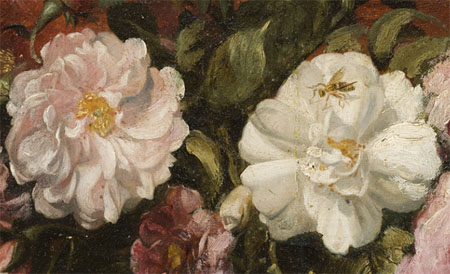There has been plenty of publicity about the eye-wateringly beautiful digital images produced by Madrid’s Prado museum in association with Google Earth.

Detail from Rubens’ The Three Graces, Prado Museum, Madrid. Taken from Google Earth.
Contrary to what some art critics have written, this is, in some ways, a more powerful experience than seeing the original, where glass, ropes and bollards block such an intense close-up experience.
However, like Google’s project to recreate classical Rome, such resources are great for the general public they are not quite good enough for a university audience.
A researcher or lecturer certainly wants high-quality images, but they also want
- the ability to easily download and manipulate the image
- related tools that can comapre and contrast images
- a stable URL to cite the digital address of the image
- good quality information about the painting (i.e. catalogue / metadata stuff)
- to be able to search all paintings in the Prado (in fact the whole world) – not just the highlights!
- clear copyright terms and conditions about using.
Do that for us Google and we will be very happy.

One reply on “Art on Google Earth – Good but not good enough”
I fully agree with your analysis of the excellent Prado resources on Google Earth. I think what they demonstrate the potential for using digital technologies in studying arts and culture. I also think you have made an excellent analysis of the tools needed to make such resources truly useful for learning.
But why limit them to researchers or lecturers and a University audience? Why is a more limited toolset “good enough for the general public;” which includes teachers, pupils in schools, artists from all fields, people considering FE, and just as importantly those who just wish to develop their personal knowledge and understanding. My work and research is conducted both within and outside of University, but in the context of the latter, I would be very angry if denied such learning opportunities. It is not the technology that is holding back learning with digital assets, but the issues of ownership, rights and a perceived unwillingness to share.